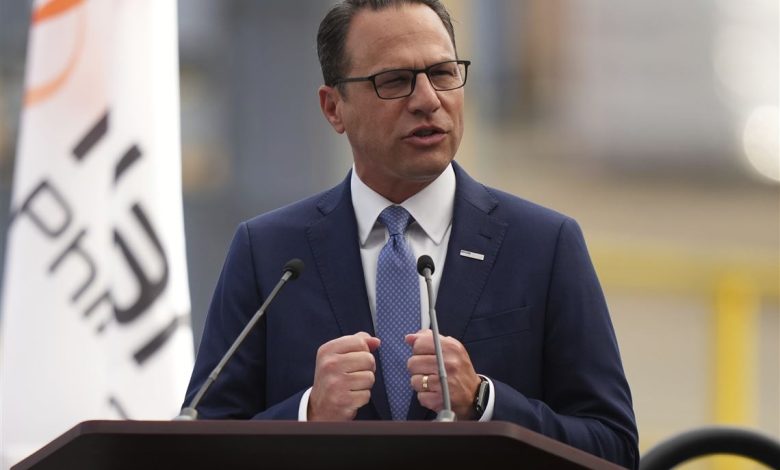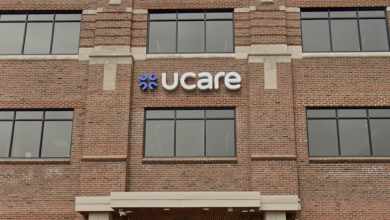7 U.S. States Unite: The Powerful Northeast Public Health Collaborative You Need to Know About

In mid-September 2025 a new regional force in American public health quietly—and deliberately—took shape. Seven Northeastern U.S. states together with New York City announced the formal creation of the Northeast Public Health Collaborative (NPHC): a voluntary coalition of public-health agencies and leaders designed to share expertise, coordinate policy, and protect evidence-based public health across a densely populated, interconnected region. The move is both practical and political: practical because disease, disaster, and misinformation cross state lines; political because states are increasingly filling gaps left by shifting federal priorities.
This article walks through who is in the Collaborative, why they formed it, what it plans to do (and what it won’t), how it fits into a larger trend of state-level public-health alliances, and what the initiative means for everyday people across the Northeast. If you live in one of the member jurisdictions—or rely on health guidance that flows from federal agencies—you should understand what this collaborative is likely to change and why it matters now.
Who’s at the table?
The NPHC is made up of seven states—Connecticut, Maine, Massachusetts, New Jersey, New York State, Pennsylvania and Rhode Island—and New York City as a formal participant. These jurisdictions say they have been collaborating informally since earlier in 2025 and have now formalized the structure to speed cooperation on shared public-health priorities across the region. Officials emphasize that the coalition is voluntary and nonbinding: members retain full legal authority over health policy inside their own borders.
State and city public-health leaders have noted that the group is intentionally broad in function: its working groups will cover vaccine recommendations and purchasing, data collection and analytics, infectious disease surveillance, epidemiology and laboratory capacity, emergency preparedness, and communications to counter misinformation—areas where regional coordination can deliver faster, more uniform protection for residents.
Why now? Context you need to know
Two intertwined forces pushed states to act.
First, the politicization and restructuring of federal public-health advisory bodies and vaccine guidance in 2025—particularly actions by the Department of Health and Human Services leadership—prompted concern among state public-health officials about continuity of evidence-based recommendations. Several states described the new collaborative as a way to preserve trust in science-based guidance and to ensure that their residents still receive protective vaccine recommendations even if federal guidance changes.
Second, the Northeast is uniquely interconnected—commuters, interstate commerce, and shared health care resources mean that outbreaks or policy divergence in one state rapidly affect others. State officials argued that a regional approach allows faster, more coherent responses to emerging threats (for example, rapidly circulating respiratory viruses or novel pathogens), better use of shared laboratory resources, and more efficient purchasing or distribution of countermeasures. The NPHC is, in part, an operational recognition that pathogens don’t respect state lines.
Put plainly: when the federal toolbox feels uncertain, states in close proximity often decide they should build their own mutual aid and policy framework. The Northeast’s action mirrors a separate, earlier alliance of West Coast states that formed to maintain their own vaccine and public-health guidance in response to federal shifts—demonstrating a broader pattern of regional responses to national instability.
What the Collaborative says it will do
Leaders outlined several initial, concrete priorities:
- Issue and harmonize regional public-health recommendations where appropriate—particularly on vaccines and protection for high-risk populations—so that neighboring jurisdictions can reduce confusion and maintain high levels of protection. Officials stressed this will be voluntary guidance members can adopt or adapt.
- Coordinate purchasing and logistics for supplies and medical countermeasures, which can increase negotiating power and streamline distribution during high demand.
- Share data and analytics, including surveillance data, laboratory capacity, and epidemiologic modeling—helping identify outbreaks faster and target resources where they will have the greatest impact.
- Strengthen communications to counter misinformation and maintain public trust in evidence-based guidance—an increasingly central role for health departments since the COVID-19 era.
- Joint planning for emergency preparedness and response, including exercises and mutual aid agreements among health departments and labs.
Members emphasize the collaborative is not an attempt to supersede federal authority or to create a new regulatory body. Instead, it is a coordination mechanism—a platform for combining technical expertise, aligning guidance where helpful, and building capacity. State and city officials repeatedly describe it as an “incubator” for regional solutions that respect each jurisdiction’s legal independence.
How this affects vaccine guidance (the hot button)
One of the most newsworthy elements of the announcement was the Collaborative’s explicit willingness to issue independent vaccine recommendations—especially for COVID-19 and other respiratory viruses—if federal guidance is limited or altered. Officials noted the Collaborative may recommend vaccines for children or pregnant people even if federal advisory panels restrict those recommendations. That stance is a direct response to shifts in federal vaccine policy earlier in 2025 that alarmed many public-health leaders.
For parents, clinicians, and pharmacists, this could mean regional differences in who is recommended to receive certain vaccines and when—but the goal from the Collaborative’s perspective is consistency within the participating jurisdictions. Practically, that may translate into synchronized state guidance documents, coordinated messaging campaigns, and shared clinical recommendations that hospitals and pediatricians can adopt across state lines.
It’s worth noting the legal mechanics: states retain authority to set vaccination policy within their borders—so the Collaborative’s guidance will be advisory, and each state will decide how to implement it within its own laws and regulatory framework. Still, the political optics are clear: states are signaling they will act to protect populations even if federal guidance loosens.
A trend, not an anomaly: where the NPHC fits in nationally
The Northeast’s move is part of a broader surge in regional and state-level public-health alliances. Earlier in 2025, a coalition of West Coast states launched a similar initiative to preserve evidence-based vaccine recommendations and coordinate pandemic preparedness. Other states and cities have taken steps—some focused narrowly on safeguarding vaccine access, others more broadly on emergency preparedness and data sharing. The NPHC joins this growing ecosystem of subnational collaboration that strengthens resilience in the absence of a consistent federal playbook.
Why does this matter? If multiple regions establish their own robust advisory and supply networks, the U.S. public-health architecture becomes more federated: decision-making and resources flow in part from state alliances rather than exclusively from federal agencies. That can be positive—more tailored, fast, and context-sensitive—but it also raises questions about equity and uniformity (which we’ll discuss below).
Benefits: what the Collaborative could realistically deliver
- Faster regional detection and response. Shared surveillance and lab networks mean outbreaks can be spotted and contained more quickly.
- Stronger, unified messaging. Coordinated communications reduce confusion in border communities where residents commute daily between states.
- Economies of scale for procurement. Joint purchasing can reduce costs and ensure more stable supplies during surges.
- A buffer against politicized federal shifts. The Collaborative offers a science-driven alternative should federal guidance change in ways that some states consider unsafe or premature.
- Capacity building for smaller states or local health departments. Sharing expertise and laboratory resources helps jurisdictions with fewer resources better protect their communities.
Risks and challenges to watch
No collaborative—no matter how well-intentioned—operates without friction. Key challenges include:
- Legal and regulatory differences. Health statutes and administrative rules vary by state; what’s feasible in New York may be constrained in another state. The Collaborative must navigate those differences without creating legal ambiguity.
- Political backlash and polarization. When public-health actions align visibly with a particular mix of governors or political parties, the Collaborative could be cast as partisan by opponents—potentially undermining trust among certain populations.
- Equity concerns. A federated system risks uneven protection if wealthier regions can secure better access to vaccines or treatments. The Collaborative will have to show it improves equity across the region, not just the member states’ internal populations.
- Interoperability and data privacy. Sharing health data across jurisdictions requires careful legal agreements, standardized formats, and privacy protections to maintain public trust.
These are solvable problems—but only if the Collaborative invests early in legal frameworks, community engagement, transparent governance, and clear communication strategies.
Voices from the announcement
State health officials framed the Collaborative as pragmatic and science-centered. For example, New York’s health leadership highlighted the benefits of shared expertise and resilience; Maine’s officials called the group an “incubator for solutions” that mirrors the region’s collaborative traditions. New York City’s health department emphasized the importance of protecting public-health infrastructure and rejecting misinformation. These consistent themes—science, trust, and mutual aid—show how leaders hope the Collaborative will be perceived by clinicians and the public.
(Those are paraphrases of official statements; the underlying press releases are public and detail the Collaborative’s stated aims and early workgroups.)
What this means for you (practical takeaways)
If you live in one of the member states or New York City, expect to see:
- Coordinated guidance on vaccines and high-risk groups that may differ slightly from federal recommendations if the Collaborative judges it necessary. Read state health department websites for the most current, regionally aligned advice.
- Potentially smoother access to vaccines and treatments during high-demand periods because of regional purchasing and distribution planning.
- A stronger emphasis on clear local messaging from your state or city health department to counter misinformation—especially around childhood and COVID-19 vaccines.
If you’re a clinician or hospital leader, the Collaborative could mean more predictable regional guidance for clinical practice, as well as shared resources during surges.
If you’re outside the Northeast, the NPHC is still meaningful: it’s part of a trend that could reshape how public health is governed in the U.S., pushing more responsibility—and opportunity—for leadership—to states and regions.
Looking ahead: measures of success
The Collaborative will be judged on measurable outcomes. Early markers to watch:
- Speed and accuracy of outbreak detection in the region compared with past years.
- Consistency of vaccination coverage across member states for targeted populations.
- Equitable distribution metrics showing smaller or poorer communities don’t lose out.
- Adoption and clarity of shared guidance by clinical networks, schools, and long-term care providers across state lines.
- Public trust indicators (surveys, uptake of preventive measures) that show messaging is effective.
If the NPHC can demonstrate improvements on these fronts, it will strengthen the case for sustained regional coordination—and perhaps provide a blueprint for other regions to follow.
Final thought: federal, state, or regional—what’s the right balance?
The rise of the Northeast Public Health Collaborative reveals a deeper governance question: when federal leadership shifts, how should responsibility for population-level health be balanced among federal, state, and regional bodies? There’s no single answer. The federal government still plays an essential role in research, regulation, and funding; states control many day-to-day public-health levers; and regional collaboratives can add speed and local contextualization.
The NPHC is notable because it’s not a secession from federal public health but rather a pragmatic layer of cooperation intended to protect people when the national picture becomes uncertain. For the millions who live, work, and travel across the Northeast every day, that pragmatic cooperation could make the difference between rapid containment and prolonged disruption.




